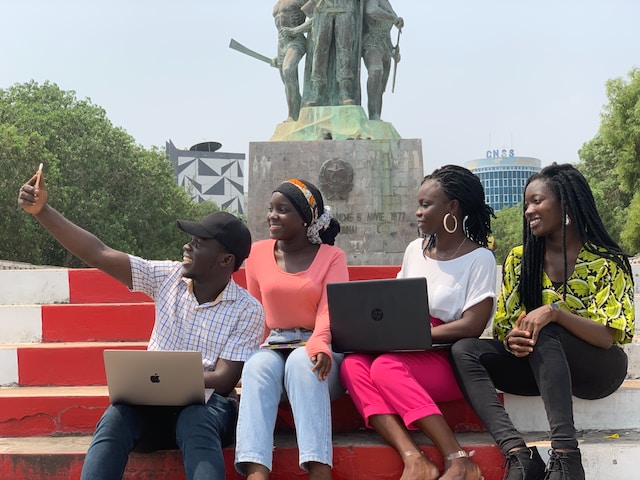The Case of An IT Company
The Hiring
When the Management of an IT Company decided to employ young personnel to man the Company’s Website and Software Units, they did not anticipate any challenges.
Ten (10) out of the Fifty (50) applicants were employed for various positions in the two units. Each unit reported to a senior manager, who assigned them roles and appraised their performance. The Website Unit got along so well with their Senior Manager and bonded well. Within a short time, they were making an impact, and the Board recommended Management for the strategic move to ensure the achievement of the company objective. The Software Unit had challenges; there were complaints of employees not coming to work on time, disrespect for their leader, laziness, and disregard for work.
The Challenge
Management became concerned and decided to engage the Unit Leader. The leader mentioned immaturity and laziness as issues with his direct reports. Management advised the leader of the Software to apply sanctions to instill discipline. There was a need for Management to engage the employees in the Software Unit when the disciplinary sanctions did not resolve the issues. The employees complained about the leadership style of the Senior Manager and the fact that they were not involved in any decisions. One of the employees said the leader made the workplace unfriendly.
Management swapped the job roles of the two leaders since the job roles were similar. The Software Unit started picking up, but the Website Unit faced challenges with their supervisor. Management realized the challenge was from the leadership.
Insight
At the Disciplinary Hearing session, it came to light that there were generational issues that Management overlooked. The Head of the Software Department was a Generation X leader (born between 1965 and 1980). He had worked in the same company for more than ten years. He had a sense of entitlement that did not give room for laziness. As is common with many of his generation, he was more focused on the job. The younger employees, who were of the Z generation (referred to as Gen Z, born between 1997 and 2021) were not seeing eye to eye with him because they were born into an era where multi-tasking was everything. They are seen to have been pampered, and perceived as not being respectful, because, the era in which they were born, young people are generally able to freely express themselves. They needed flexibility in the workplace. They worked smarter and could turn the company around if they were listened to, understood, and given room to bring their creativity to bear on their work.
The Website Unit succeeded because it had a much younger leader who understood Gen Zs and their needs, and led the team from that perspective.
because of the era in which they were born, Gen Zs are generally able to freely express themselves.
Gen Z In the Workplace
Gen Zs have been the topic of many discussions among leaders and managers of industry. Of particular interest is how their behaviour and attitude can affect the post-pandemic work environment since most of them started working around that time. Managers and leaders are striving to understand and adapt to their distinctive work traits. Gen Zs will form 27% of the global workforce by 2025, and they have unparalleled technological prowess and unique values, which bring excitement and challenges to the current set up of our workplace. They were born in the digital era, which makes them advanced in technological skills, and they also bring fresh perspectives on collaboration and communication. Gen Z’s emphasis on work-life balance, and their desire for meaningful work aligns with the growing demand for flexible and purpose-driven workplaces. They challenge traditional hierarchies and advocate for diversity, equity, and inclusion. Gen Z’s entrepreneurial mindset may lead to innovative thinking and a drive for continuous learning. By adapting to Gen Z’s preferences and harnessing their potential, they can contribute to a more dynamic, inclusive, and forward-thinking work environment.
A Frustrated CEO
This CEO believed in forming a grounded corporate culture, so he employed five (5) National Service Personnel and trained them after their service to start his brokerage business. The CEO invested in them and gave them exposure. He thought he could coach them for at least three years to build the expected organizational culture. A year on, one of the five resigned to join another company. One requested to travel out of the country to further his education. The CEO felt betrayed and decided to meet the remaining employees to discuss how best he could maintain them and engage them effectively to carry out his strategy. One employee stated he worked better at home and the beach, and all the CEO needed to do was to set him up with work tools, and he would overachieve all targets. The fourth employee wanted an excursion on weekends to reduce the stress level.
The CEO was very disappointed, and his dream of grounded corporate culture was dashed, as he wondered if investing in these employees was worth the sacrifice.
This strategy could have perfectly worked ten years earlier, or with Gen X and to some extent, the Boomer generation, but not with the Gen Zs. Should the CEO give up on them?
The digital realm is Gen Z’s native habitat. Equip them with cutting-edge tools and technologies that streamline workflows and enhance productivity.
Nine Secrets to Harness The Productivity of Gen Zs
My first encounter with Gen Z in the workplace was with an interviewee. My company was looking for a marketing officer, and one of the applicants, who happened to be a young lady, made it clear to the panel that she would want to have a driver who would drive her around to do the marketing because she did not want to be stressed.
There is a need to align our workplaces with their values and preferences;
1. Take advantage of their technological skills and make available cutting-edge tools and digital platforms to facilitate efficient communication and collaboration.
2. Embrace a flexible work culture that accommodates their desire for work-life balance.
3. Cultivate a diverse and inclusive environment where all employees feel valued and appreciated.
4. Provide avenues for growth and development, such as mentoring programs and training opportunities, to support their continuous learning.
5. Incorporate social impact initiatives that allow them to contribute to meaningful causes.
6. Foster a collaborative and team-oriented atmosphere that encourages cross-functional collaboration.
7. Create an atmosphere that embraces purpose-driven work by aligning the company’s mission with its core values.
8. Showcase how their contributions contribute to a larger, meaningful impact, underscoring the significance of their roles within the grand narrative of the organization.
9. The digital realm is Gen Z’s native habitat. Equip them with cutting-edge tools and technologies that streamline workflows and enhance productivity.
Conclusion
The future of employee engagement with the advent of newer generations holds exciting possibilities. As younger generations, such as Gen Zens, step into the workforce, the landscape of employee engagement is poised for transformation. These workers prioritize purpose-driven work, seeking opportunities to make a meaningful impact. Every team meeting will be an interesting one!

Priscilla Agnes Menson is a Chartered Human Resources Management Practitioner, and a member of the Institute of Human Resources Management (IHRM). She has over 23 years of practice experience in human resources and banking operations. Priscilla is currently the Head of Human Resources and Administration at Donewell Insurance Limited.

